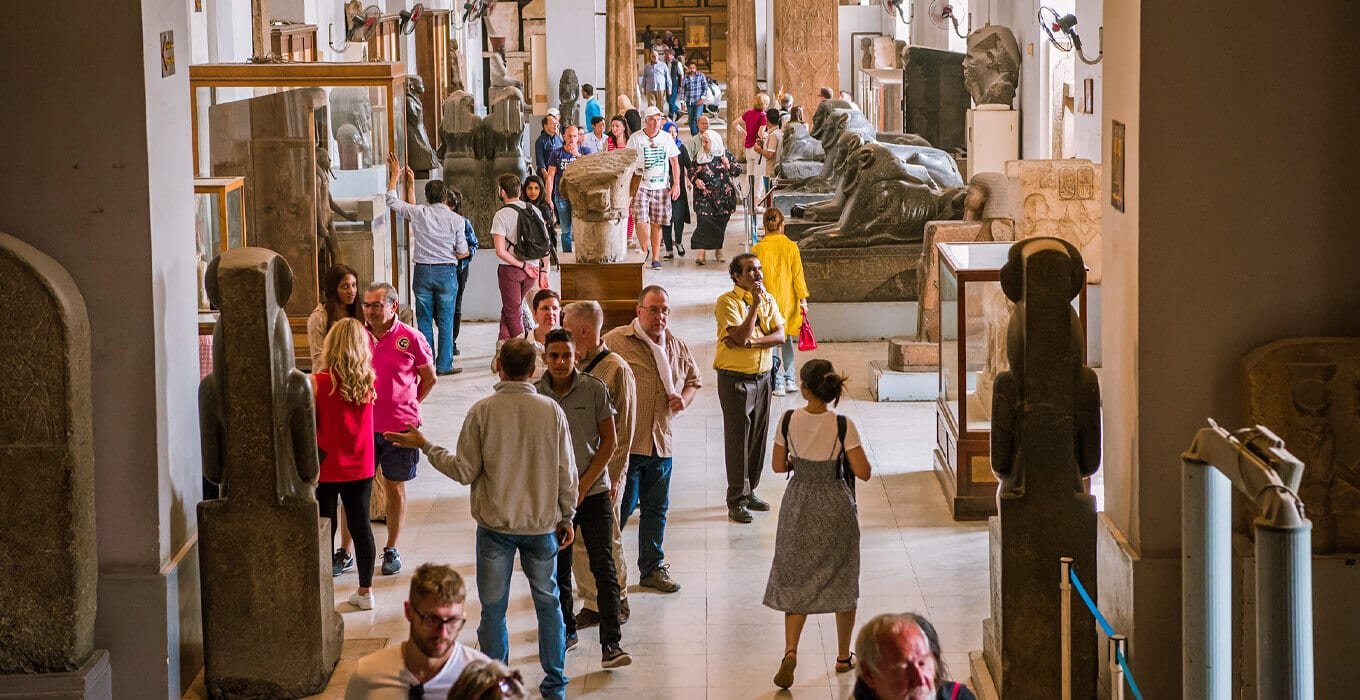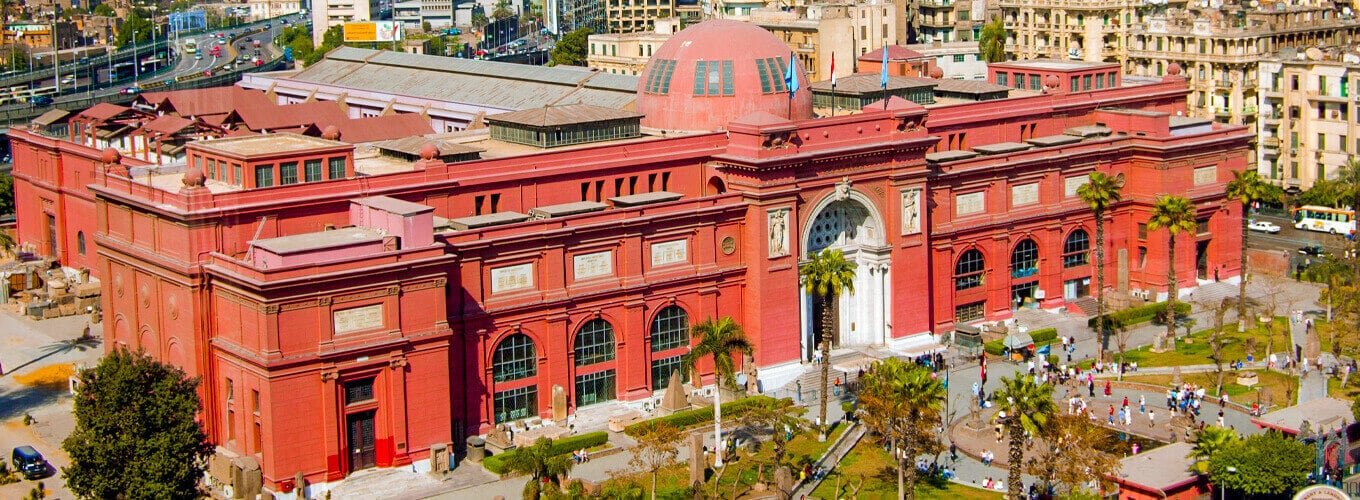The Egyptian Museum of Cairo is a time capsule transporting visitors to the heart of ancient Egyptian civilization. Housing the world’s largest collection of Pharaonic antiquities, with over 120,000 artifacts spanning millennia, the museum offers a breathtaking glimpse into the lives, beliefs, and artistic achievements of a bygone era. Prepare to be dazzled by the iconic Golden Mask of Tutankhamun, marvel at the mummified remains of pharaohs, and explore a treasure trove of everyday objects, statues, and monuments that bring the stories of ancient Egypt to life. Step through the grand entrance and embark on a journey through time, where the secrets of the pharaohs await.
Royal Mummies
The Egyptian Museum of Cairo houses a remarkable collection of royal mummies, offering an extraordinary glimpse into the past and ancient Egypt’s complex beliefs about death and the afterlife.
- Background on the Mummification Process: The Egyptians developed an elaborate mummification process to preserve the body for its journey to the afterlife. This involved removing organs, drying the body with natron (a type of salt), and carefully wrapping it in linen bandages.
- Notable Mummies on Display: Some of the most famous mummies on display include Ramses II (one of Egypt’s greatest pharaohs), Hatshepsut (a powerful female pharaoh), and Thutmose III. Visitors can observe their preserved features, giving an uncanny sense of connection to these individuals from millennia ago.
- Insights into the Beliefs Surrounding the Afterlife: Mummification reflected the profound Egyptian belief in an afterlife. They believed that the soul (or ka) needed a physical body to return to, hence the preservation efforts. Tombs were filled with items the person might require in the next life, further illustrating this concept.

Artifacts of Daily Life
Beyond monumental treasures, the Egyptian Museum of Cairo showcases an extensive array of everyday objects, providing a window into the lives of ordinary ancient Egyptians.
- Showcase of Everyday Objects: The collection includes jewelry, tools, pottery, toys, and even cosmetics. These artifacts reveal an impressive level of craftsmanship and artistry in even common items.
- How These Items Reveal Aspects of Ancient Egyptian Society: These everyday objects offer invaluable insights into social structure, occupations, fashion, and family life in ancient Egypt. The materials used, their design, and their level of decoration can hint at the owner’s social status and the thriving industries that supported daily life.
Statues and Monuments
The museum boasts a remarkable collection of statues and monuments depicting pharaohs, deities, and scenes from mythology and history.
- Description of Notable Statues: Highlights include the seated statue of Khafre (builder of one of the Great Pyramids), statues of the god Amun, and sculptures depicting the scribe, a figure important in administrative life.
- Artistic Styles and Their Evolution Over Time: Visitors can trace the evolution of artistic styles, from the rigid formality of the Old Kingdom to the greater realism of the New Kingdom. The statues communicate both power and idealized beauty, reflecting the pharaohs’ status as both human rulers and divine figures.
Practical Information for Visiting the Egyptian Museum of Cairo
Hours and Tickets
- Operational Hours: Be sure to check the official website for the most current hours, as these may vary. Typically, the museum is open from 9 am to 5 pm, with extended hours during certain seasons.
- Ticket Prices: Ticket prices are usually tiered, with general admission, discounts for students (with valid ID), and additional fees for special rooms like the Royal Mummies hall.
- Where to Purchase Tickets: Tickets can be purchased on-site at the museum’s ticket office. To save time, consider pre-booking your tickets online through the official museum website or reputable tour operators.
Location and Transportation
- Address and Directions: The Egyptian Museum of Cairo is centrally located on Tahrir Square in downtown Cairo. Provide the exact address and a link to a map for convenience.
- Public Transportation Options: The museum is easily accessible via the Cairo Metro system (Sadat station is closest). Taxis and ride-sharing services are also readily available.
- Information on Guided Tours: Consider a guided tour for in-depth information and context about the exhibits. Many tour operators offer options, or you can hire a guide directly at the museum.

Tips for an Enjoyable Visit
- Best Times to Visit to Avoid Crowds: If possible, visit during weekdays or early mornings/late afternoons to avoid the largest crowds.
- Recommended Duration of the Visit: A minimum of 2-3 hours is needed for a basic overview. Serious history enthusiasts could easily spend an entire day or more exploring its vast collection.
- Facilities within the Museum: The museum usually has a small café, restrooms, and a gift shop. However, it’s wise to check ahead for current availability.
- Photography Restrictions: Be aware of photography restrictions. General photography may be permitted, but often with a fee. Flash photography is usually prohibited, and there are strict rules in areas like the Royal Mummy rooms.
FAQs
Is the Egyptian Museum of Cairo worth visiting?
Absolutely! For anyone with even a passing interest in ancient history or world civilizations, the Egyptian Museum of Cairo is an essential stop. Its vast collection gives a unique perspective on Egyptian art, culture, and beliefs. Seeing iconic treasures like Tutankhamun’s mask in person is truly a once-in-a-lifetime experience.
How long does it take to see the Egyptian Museum of Cairo?
The time needed depends on your level of interest. A casual walk-through could be done in a couple of hours, but to truly appreciate the exhibits it’s best to allocate at least half a day. Serious history buffs could easily spend multiple days exploring every corner of the collection.
Is photography allowed inside the Egyptian Museum of Cairo?
There are restrictions on photography. General photography of the exhibits may be allowed with a separate photography pass you’ll need to purchase. Flash photography is usually forbidden. The Royal Mummies hall often has a complete photography ban. Check the current rules on the museum’s website before your visit.
Are there guided tours of the Egyptian Museum of Cairo?
Yes! Guided tours are a fantastic way to enhance your experience. You can book guided tours through various tour companies or hire a private guide at the museum’s entrance. Guides provide invaluable context, stories, and can help navigate the museum’s extensive collection.
What other attractions are near the Egyptian Museum of Cairo?
The museum’s central location offers easy access to other Cairo highlights:
- Tahrir Square: The heart of modern Cairo and the site of major historical events.
- Islamic Cairo: A historic district with stunning mosques and bustling markets.
- Khan el-Khalili Bazaar: A vibrant souk (market) where you can shop for souvenirs and experience traditional Egyptian life.
- The Coptic Quarter: Home to historic churches and museums showcasing Egypt’s Coptic Christian heritage.
Conclusion
The Egyptian Museum of Cairo stands as a testament to the enduring power and legacy of ancient Egypt. Housing the world’s largest collection of Pharaonic antiquities, it offers a captivating journey through time, allowing visitors to come face-to-face with mummies, marvel at iconic treasures, and gain insights into a bygone civilization.
Whether you’re a history buff or simply fascinated by the mysteries of the past, the Egyptian Museum is a must-visit destination. Book your tickets and step back into a world of pharaohs, gods, and timeless treasures. An adventure through the halls of this remarkable museum will ignite your imagination and leave you in awe of the wonders of ancient Egypt.
Related Article to Read:







